The Method for Fabricating Proppant and Cenosphere Sand-Based Casting Molds Involving the Use of Binder Jetting 3D Printing with Furan Binder and Impregnation with Colloidal Silica Binder
Abstract
1. Introduction
2. Materials and Methods
2.1. The Material and Sample Preparation and Analysis
2.2. The Mold Preparing, Casting Procedure and Analysis of Castpart Properties
3. Results
3.1. The Proppant and Cenosphere Sand Morphology, Size Distribution and Elemental Composition
3.2. The TGA Analysis of the Samples Obtained via Binder Jetting Using Proppant and Cenosphere Sands
3.3. The XRD Results for the Proppant and Cenosphere Sands and Samples Obtained via Binder Jetting and Impregnation with Colloidal Silica Binder
3.4. The Proppant and Cenosphere Sample Colloidal Silica Binder Impregnated and Sintered Structure
3.5. The Micro-CT Results for As-Printed Proppant and Cenosphere Samples After Impregnation and Sintering
3.6. The Mechanical Properties of the As-Printed Proppant and Cenosphere Samples and Influence of Colloidal Silica Binder Impregnation and Sintering on the Mechanical Properties
3.7. The Linear Shrinkage of As-Printed Proppant and Cenosphere Samples After Impregnation and Sintering
3.8. The Mold Production and Casting Results
4. Conclusions
- i.
- The proppant and cenosphere sands have a mean grain size of 254 and 70 µm, respectively, and both are well suited for additive manufacturing via the binder-jetting technique because of the shape close to spherical. The proppant sand is a mixture of corundum and mullite, while cenosphere sand is primarily mullite.
- ii.
- For proppant sand printing via binder jetting, the conventional quantities of furan binder and curing agent required for silica sand printing are employed. However, for cenosphere sand, the necessity arises to employ reduced layer thickness and elevated consumption of furan binder and curing agent to attain minimal required green strength greater than 0.5 MPa.
- iii.
- It was established that, following impregnation due to gravitational action, the colloidal silica binder flows out from the printed mold part, thereby decreasing the strength and promoting crack formation in the mold parts.
- iv.
- The structure of the proppant-based mold material after three times impregnation in colloidal silica binder and sintering consists of proppant sand grains (68%) with cristobalite binder bridges (18%) and porosity (13%). The cenosphere-based mold material obtained via a regime of two times impregnation, pre-sintering, two times additional impregnation, and final sintering exhibits a higher porosity of 21.5%. However, these pores are spherical in shape and located within the hollow cenosphere, thereby exerting no influence on the mold material’s strength.
- v.
- To achieve a bending strength of approximately 4 MPa, which is essential for the shell mold components, a minimum of three impregnations in colloidal silica binder is required for the proppant sand mold. In the case of cenosphere sand molds, after impregnation, a pre-sintering operation is necessary prior to final sintering. This is due to the high content of furan binder, which leads to a substantial reduction in strength following the burnout of furan binder.
- vi.
- While adequate dimensional accuracy was achieved for the nickel superalloy impeller casting, the surface quality is significantly lower than that of conventional casting techniques. The surface roughness (Sz) values for casting areas in contact with the proppant and cenosphere mold parts were 152 and 115 µm, respectively.
Author Contributions
Funding
Institutional Review Board Statement
Informed Consent Statement
Data Availability Statement
Conflicts of Interest
References
- Sivarupan, T.; Balasubramani, N.; Saxena, P.; Nagarajan, D.; El Mansori, M.; Salonitis, K.; Jolly, M.; Dargusch, M.S. A Review on the Progress and Challenges of Binder Jet 3D Printing of Sand Moulds for Advanced Casting. Addit. Manuf. 2021, 40, 101889. [Google Scholar] [CrossRef]
- Sivarupan, T.; El Mansori, M.; Coniglio, N.; Dargusch, M. Effect of Process Parameters on Flexure Strength and Gas Permeability of 3D Printed Sand Molds. J. Manuf. Process. 2020, 54, 420–437. [Google Scholar] [CrossRef]
- Walker, J.; Harris, E.; Lynagh, C.; Beck, A.; Lonardo, R.; Vuksanovich, B.; Thiel, J.; Rogers, K.; Conner, B.; MacDonald, E. 3D Printed Smart Molds for Sand Casting. Inter. Metalcast. 2018, 12, 785–796. [Google Scholar] [CrossRef]
- Dana, H.R.; El Mansori, M. Mechanical Characterisation of Anisotropic Silica Sand/Furan Resin Compound Induced by Binder Jet 3D Additive Manufacturing Technology. Ceram. Int. 2020, 46, 17867–17880. [Google Scholar] [CrossRef]
- Guo, N.; Leu, M.C. Additive Manufacturing: Technology, Applications and Research Needs. Front. Mech. Eng. 2013, 8, 215–243. [Google Scholar] [CrossRef]
- Chen, F.; Zhu, H.; Wu, J.-M.; Chen, S.; Cheng, L.-J.; Shi, Y.-S.; Mo, Y.-C.; Li, C.-H.; Xiao, J. Preparation and Biological Evaluation of ZrO2 All-Ceramic Teeth by DLP Technology. Ceram. Int. 2020, 46, 11268–11274. [Google Scholar] [CrossRef]
- Guo, J.; Zeng, Y.; Li, P.; Chen, J. Fine Lattice Structural Titanium Dioxide Ceramic Produced by DLP 3D Printing. Ceram. Int. 2019, 45, 23007–23012. [Google Scholar] [CrossRef]
- Zeng, Y.; Chen, X.; Sun, L.; Yao, H.; Chen, J. Effect of Different Sintering Additives Type on Vat Photopolymerization 3D Printing of Al2O3 Ceramics. J. Manuf. Process. 2022, 83, 414–426. [Google Scholar] [CrossRef]
- Pan, Y.; Li, H.; Liu, Y.; Liu, Y.; Hu, K.; Wang, N.; Lu, Z.; Liang, J.; He, S. Effect of Holding Time During Sintering on Microstructure and Properties of 3D Printed Alumina Ceramics. Front. Mater. 2020, 7, 54. [Google Scholar] [CrossRef]
- Basar, O.; Veliyath, V.P.; Tarak, F.; Sabet, E. A Systematic Study on Impact of Binder Formulation on Green Body Strength of Vat-Photopolymerisation 3D Printed Silica Ceramics Used in Investment Casting. Polymers 2023, 15, 3141. [Google Scholar] [CrossRef]
- Corcione, C.E.; Greco, A.; Montagna, F.; Licciulli, A.; Maffezzoli, A. Silica Moulds Built by Stereolithography. J. Mater. Sci. 2005, 40, 4899–4904. [Google Scholar] [CrossRef]
- Wang, L.; Liu, X.; Wang, G.; Tang, W.; Li, S.; Duan, W.; Dou, R. Partially Stabilized Zirconia Moulds Fabricated by Stereolithographic Additive Manufacturing via Digital Light Processing. Mater. Sci. Eng. A 2020, 770, 138537. [Google Scholar] [CrossRef]
- Huang, S.; Ye, C.; Zhao, H.; Fan, Z. Additive Manufacturing of Thin Alumina Ceramic Cores Using Binder-Jetting. Addit. Manuf. 2019, 29, 100802. [Google Scholar] [CrossRef]
- Sviridova, I.; Holling, H.; Tang, W.; Küll, A.; Terán, C.M. Production of Ceramic Investment Casting Shells Using Lithography-Based Ceramic Manufacturing and Binder Jetting Technology. JMMP 2024, 8, 162. [Google Scholar] [CrossRef]
- Chen, Q.; Juste, E.; Lasgorceix, M.; Lefebvre, G.; Tenailleau, C.; Duployer, B.; Grossin, D.; Petit, F.; Leriche, A. Post-Infiltration to Improve the Density of Binder Jetting Ceramic Parts. J. Eur. Ceram. Soc. 2022, 42, 7134–7148. [Google Scholar] [CrossRef]
- Peng, L.; Jiang, W.; Yang, L.; Chen, Z.; Li, G.; Guan, F.; Fan, Z. Effect of Silica Sol on Performance and Surface Precision of Alumina Ceramic Shell Prepared by Binder Jetting. Ceram. Int. 2022, 48, 24372–24382. [Google Scholar] [CrossRef]
- Li, H.; Elsayed, H.; Colombo, P. Enhanced Mechanical Properties of 3D Printed Alumina Ceramics by Using Sintering Aids. Ceram. Int. 2023, 49, 24960–24971. [Google Scholar] [CrossRef]
- Li, F.; Ji, X.; Wu, Z.; Qi, C.; Lai, J.; Xian, Q.; Sun, B. Digital Light Processing 3D Printing of Ceramic Shell for Precision Casting. Mater. Lett. 2020, 276, 128037. [Google Scholar] [CrossRef]
- Curodeau, A.; Sachs, E.; Caldarise, S. Design and Fabrication of Cast Orthopedic Implants with Freeform Surface Textures from 3-D Printed Ceramic Shell. J. Biomed. Mater. Res. 2000, 53, 525–535. [Google Scholar] [CrossRef]
- Kim, E.-H.; Choi, H.-H.; Jung, Y.-G. Fabrication of a Ceramic Core for an Impeller Blade Using a 3D Printing Technique and Inorganic Binder. J. Manuf. Process. 2020, 53, 43–47. [Google Scholar] [CrossRef]
- Rodríguez-González, P.; Zapico, P.; Robles-Valero, P.E.; Barreiro, J. Novel Post-Processing Procedure to Enhance Casting Molds Manufactured by Binder Jetting AM. Addit. Manuf. 2022, 59, 103142. [Google Scholar] [CrossRef]
- Bae, C.-J.; Halloran, J.W. Integrally Cored Ceramic Mold Fabricated by Ceramic Stereolithography: Ceramic Mold Fabricated by Ceramic Stereolithography. Int. J. Appl. Ceram. Technol. 2011, 8, 1255–1262. [Google Scholar] [CrossRef]
- Zhou, W.Z.; Li, D.; Chen, Z.W.; Chen, S. Direct Fabrication of an Integral Ceramic Mould by Stereolithography. Proc. Inst. Mech. Eng. Part B 2010, 224, 237–243. [Google Scholar] [CrossRef]
- Park, H.-Y.; Kim, E.-H.; Cho, G.-H.; Jung, Y.-G.; Zhang, J. Process Development of Fabricating Ceramic Core Using 3D Printing Technique. Mater. Chem. Phys. 2019, 231, 382–387. [Google Scholar] [CrossRef]
- Magerramova, L.A.; Kozlov, B.G.; Protasov, V.E. Development of a Method for Manufacturing Ceramic Tooling for Precision Casting of Blades Made of Heat-Resistant Alloys Using Additive Technologies. J. Phys. Conf. Ser. 2021, 1891, 012043. [Google Scholar] [CrossRef]
- Snelling, D.A.; Williams, C.B.; Suchicital, C.T.A.; Druschitz, A.P. Binder Jetting Advanced Ceramics for Metal-Ceramic Composite Structures. Int. J. Adv. Manuf. Technol. 2017, 92, 531–545. [Google Scholar] [CrossRef]
- Manotham, S.; Channasanon, S.; Nanthananon, P.; Tanodekaew, S.; Tesavibul, P. Photosensitive Binder Jetting Technique for the Fabrication of Alumina Ceramic. J. Manuf. Process. 2021, 62, 313–322. [Google Scholar] [CrossRef]
- Solis, D.M.; Silva, A.V.; Volpato, N.; Berti, L.F. Reaction-Bonding of Aluminum Oxide Processed by Binder Jetting. J. Manuf. Process. 2019, 41, 267–272. [Google Scholar] [CrossRef]
- Kim, J.; Gal, C.W.; Choi, Y.-J.; Park, H.; Yoon, S.-Y.; Yun, H. Effect of Non-Reactive Diluent on Defect-Free Debinding Process of 3D Printed Ceramics. Addit. Manuf. 2023, 67, 103475. [Google Scholar] [CrossRef]
- Maleksaeedi, S.; Eng, H.; Wiria, F.E.; Ha, T.M.H.; He, Z. Property Enhancement of 3D-Printed Alumina Ceramics Using Vacuum Infiltration. J. Mater. Process. Technol. 2014, 214, 1301–1306. [Google Scholar] [CrossRef]
- Monti, M.; Hoydonckx, H.; Stappers, F.; Camino, G. Thermal and Combustion Behavior of Furan Resin/Silica Nanocomposites. Eur. Polym. J. 2015, 67, 561–569. [Google Scholar] [CrossRef]
- Rivero, G.; Villanueva, S.; Manfredi, L.B. Furan Resin as a Replacement of Phenolics: Influence of the Clay Addition on Its Thermal Degradation and Fire Behaviour. Fire Mater. 2014, 38, 683–694. [Google Scholar] [CrossRef]
- Chauruka, S.R.; Hassanpour, A.; Brydson, R.; Roberts, K.J.; Ghadiri, M.; Stitt, H. Effect of mill type on the size reduction and phase transformation of gamma alumina. Chem. Eng. Sci. 2015, 134, 774–783. [Google Scholar] [CrossRef]
- Ružić, J.; Maletaškić, J.; Radovanović, Ž.; Ilić, S. Mechanical properties of mullite investigated by nanoindentation. Metall. Mater. Data. 2024, 2, 47–50. [Google Scholar] [CrossRef]
- Joni, I.M.; Nulhakim, L.; Vanitha, M.; Panatarani, C. Characteristics of crystalline silica (SiO2) particles prepared by simple solution method using sodium silicate (Na2SiO3) precursor. IOP Conf. Ser. J. Phys. Conf. Ser. 2018, 1080, 012006. [Google Scholar] [CrossRef]
- Bazhenov, V.E.; Kovyshkina, E.P.; Sannikov, A.V.; Koltygin, A.V.; Ten, D.V.; Rizhsky, A.A.; Belov, V.D.; Lazarev, E.A. Analysis of the slurry and ceramic properties for investment casting obtained with domestic colloidal silica binders. Izvestiya. Non-Ferr. Metall. 2023, 29, 15–28. [Google Scholar] [CrossRef]
- Vogt, U.F.; Gorbar, M.; Dimopoulos-Eggenschwiler, P.; Broenstrup, A.; Wagner, G.; Colombo, P. Improving the Properties of Ceramic Foams by a Vacuum Infiltration Process. J. Eur. Ceram. Soc. 2010, 30, 3005–3011. [Google Scholar] [CrossRef]
- Barui, S.; Chowdhury, S.; Samajdar, R.; Chakraborty, S.; Gavade, M.; Basu, B. Impact of ‘Core-Shell’ Mode of Printing on Properties of 3D Binderjet Printed Zirconia-Alumina Based Bioceramics. Open Ceram. 2020, 3, 100026. [Google Scholar] [CrossRef]
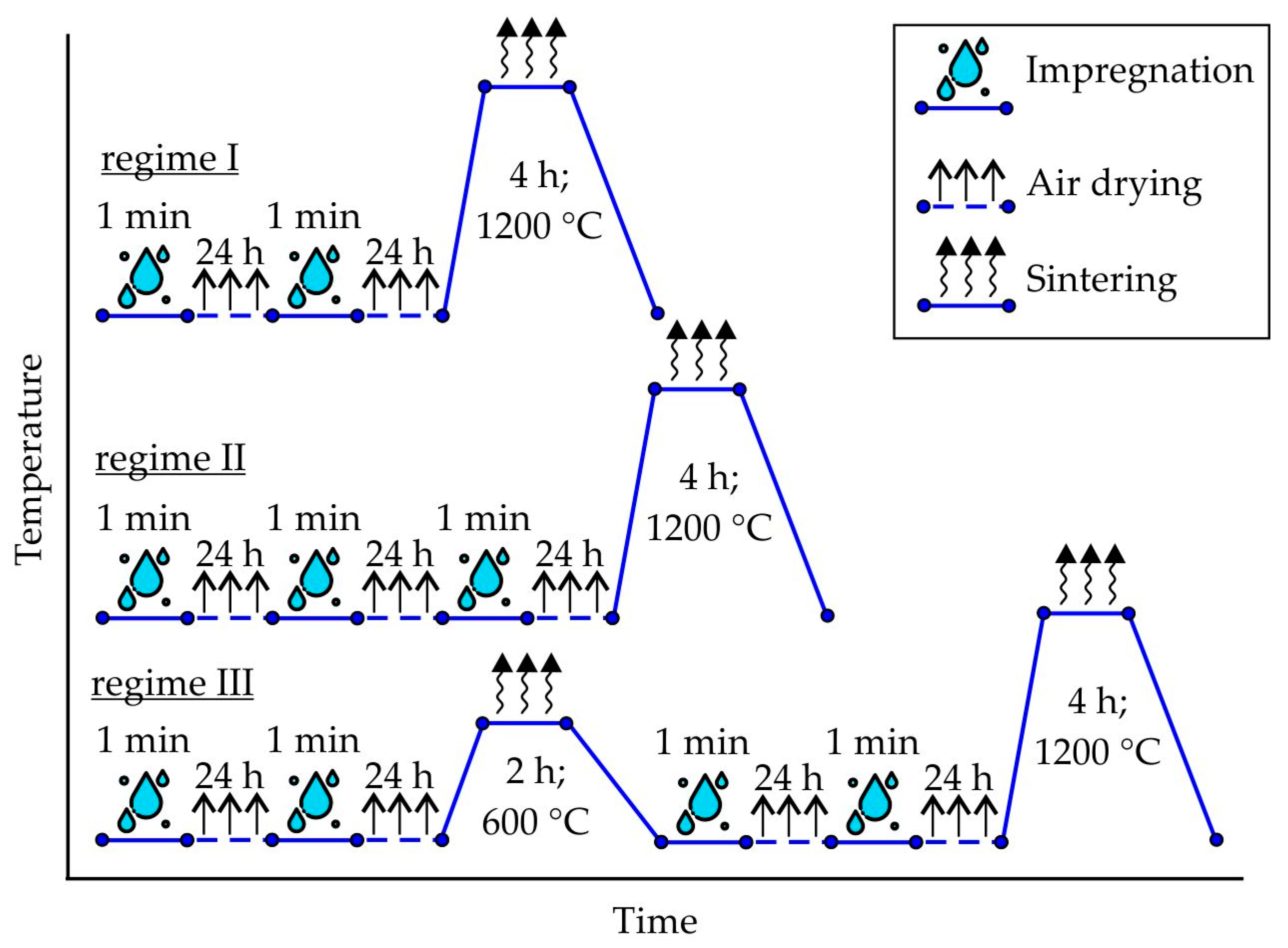


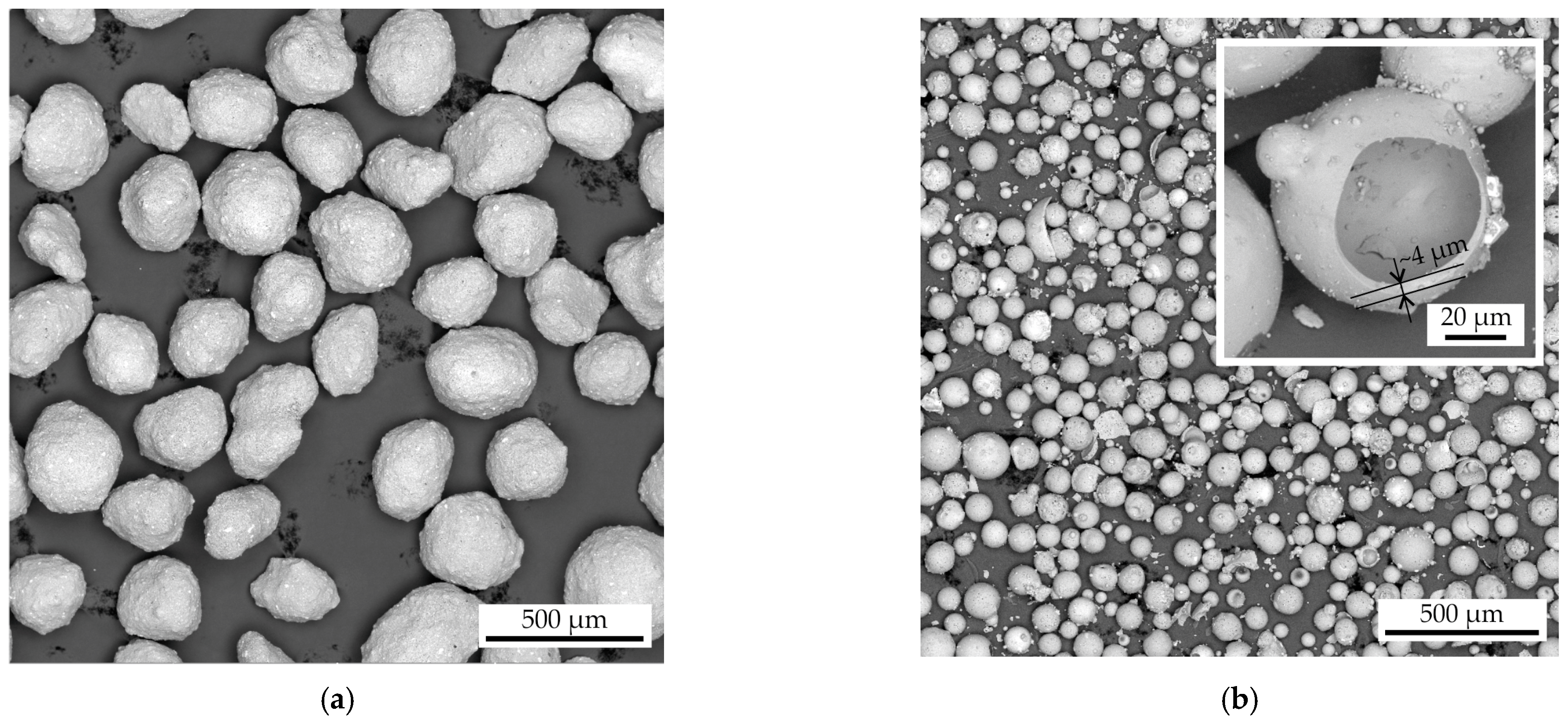
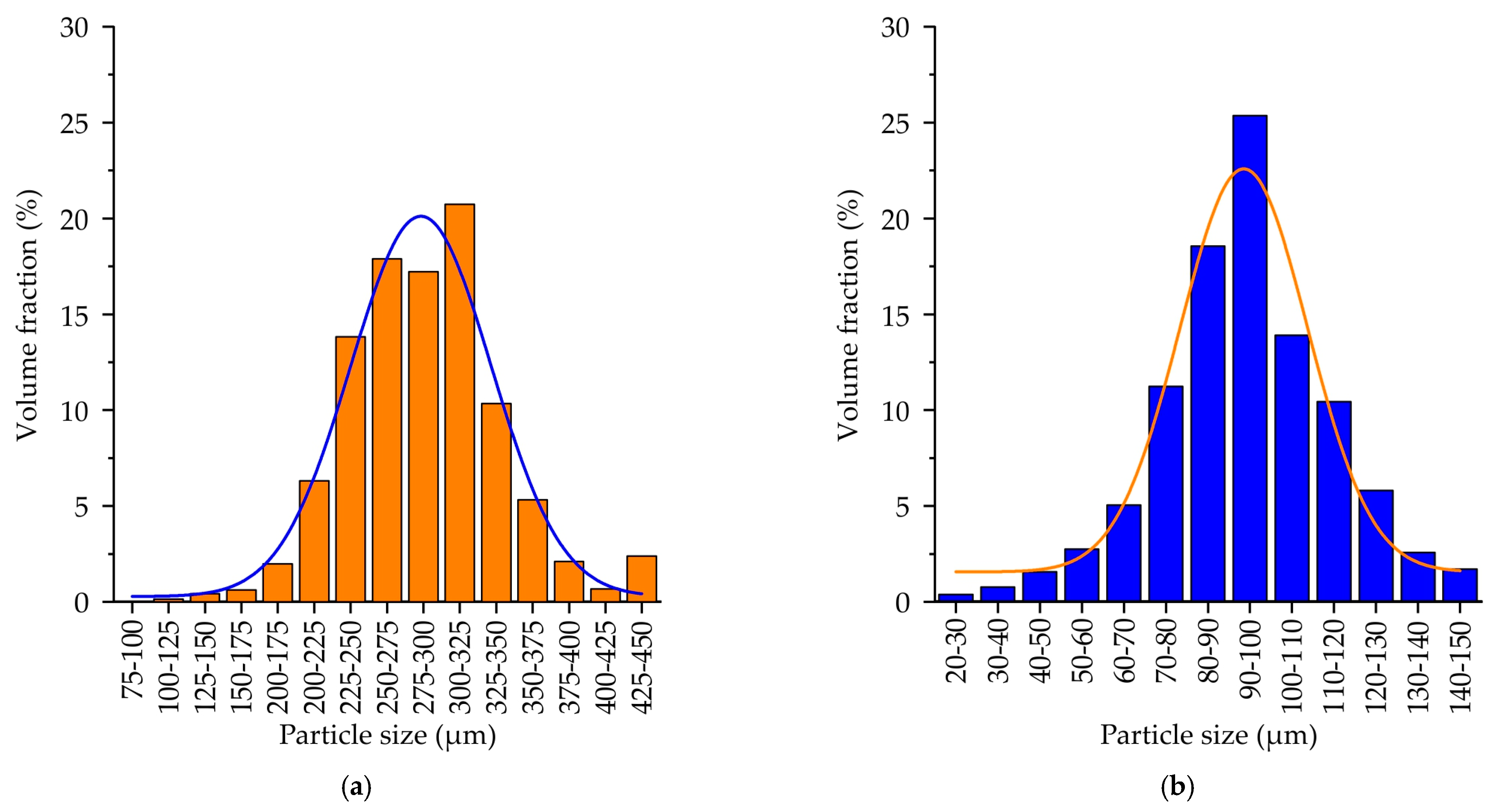
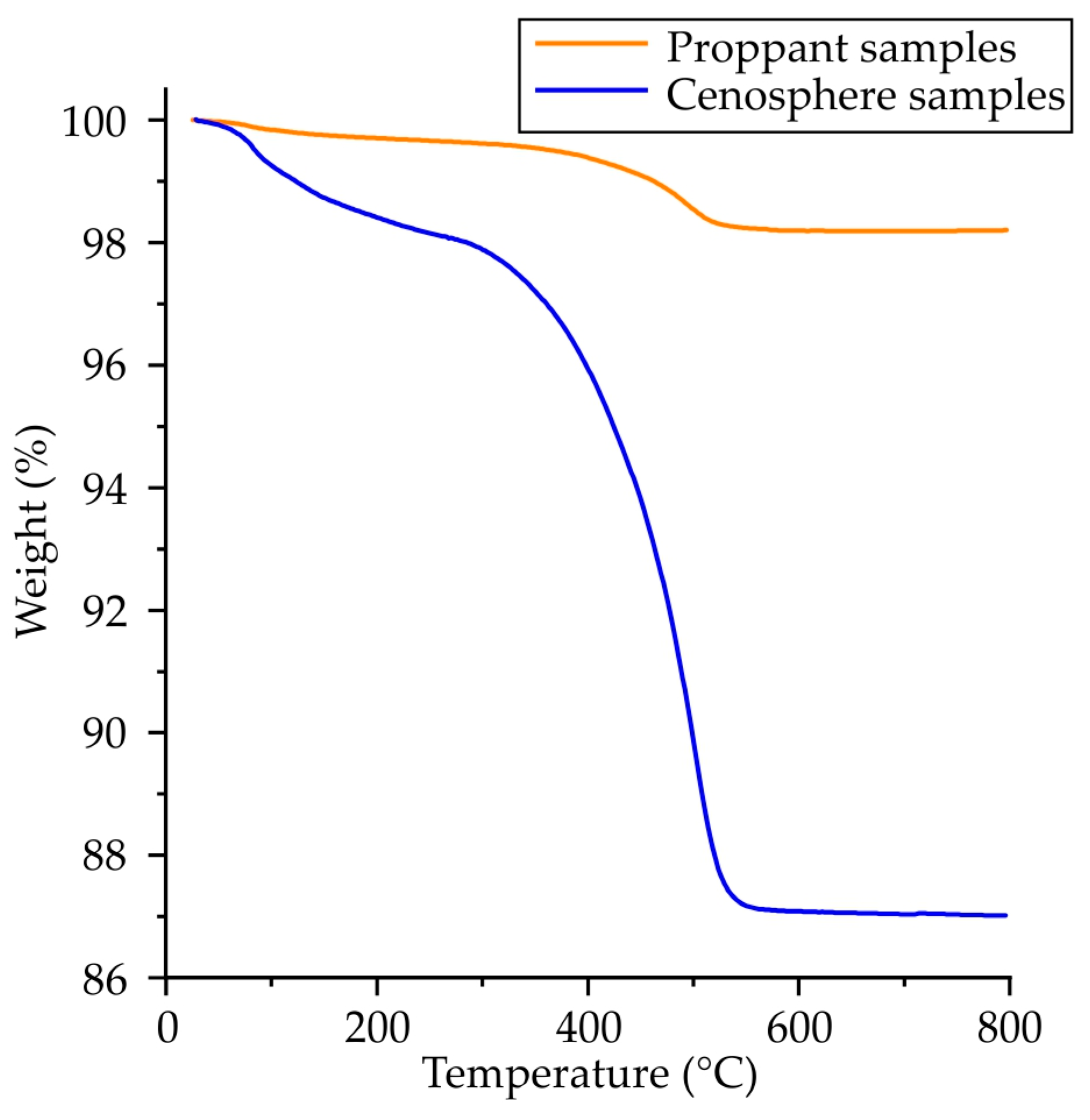

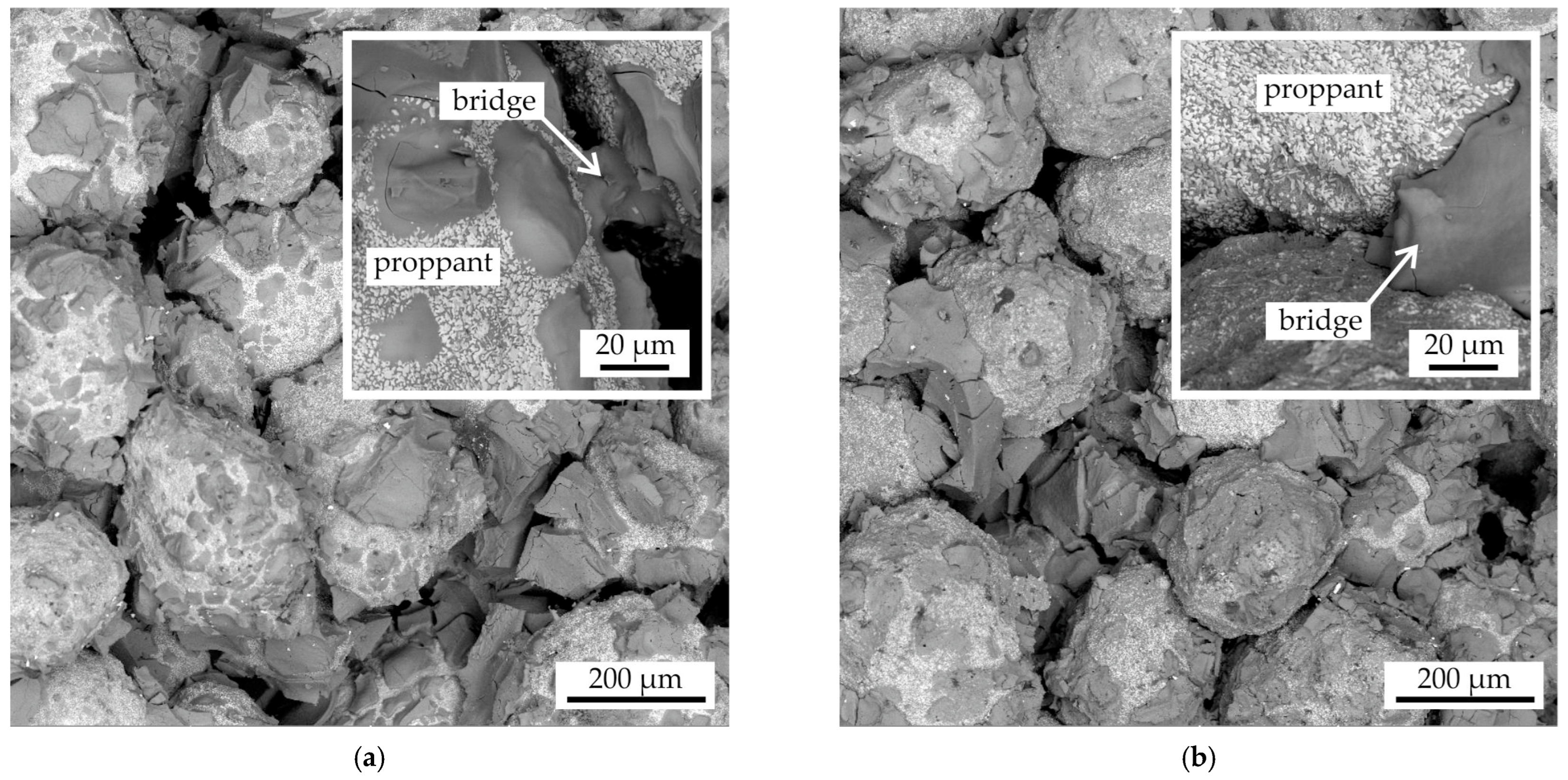
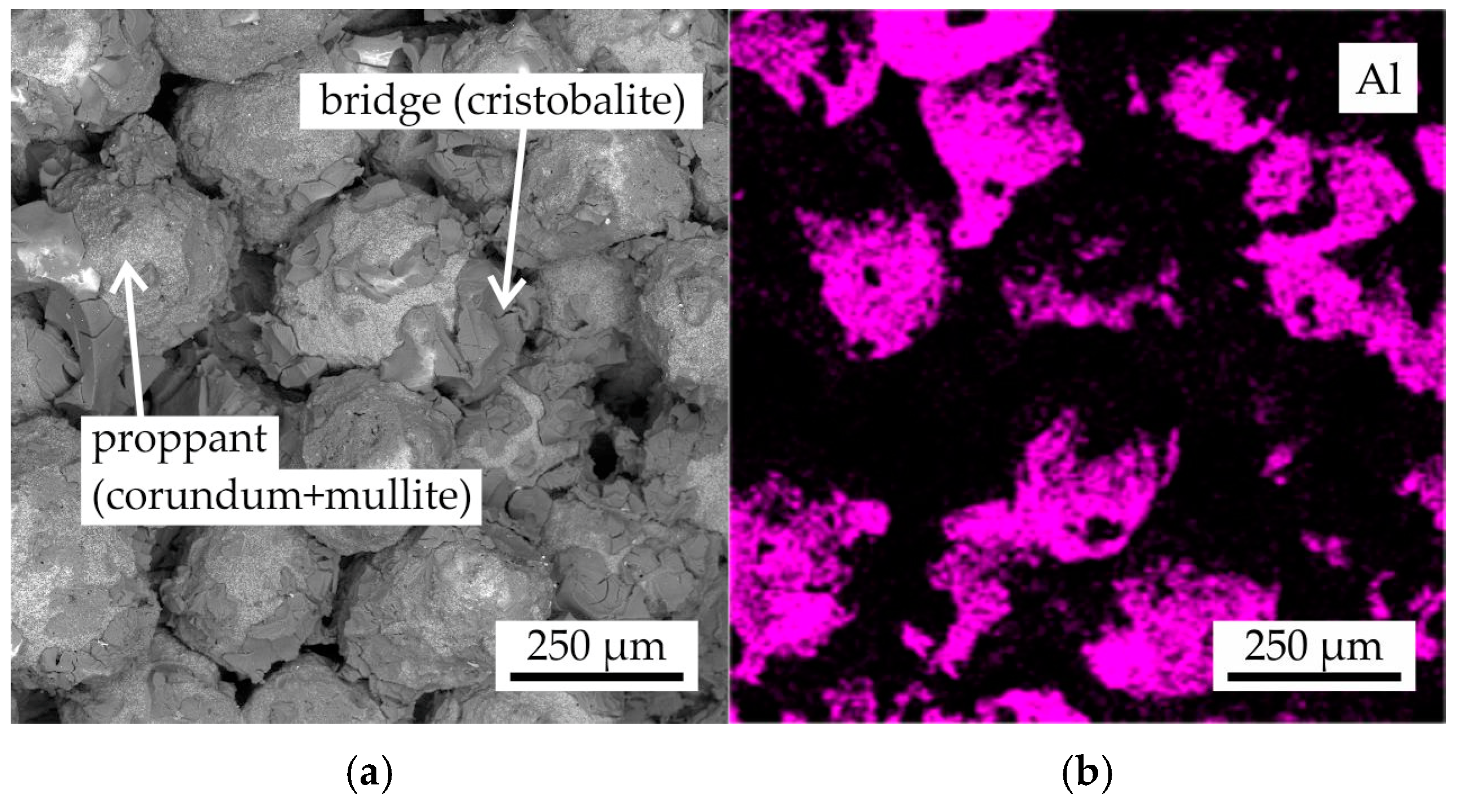
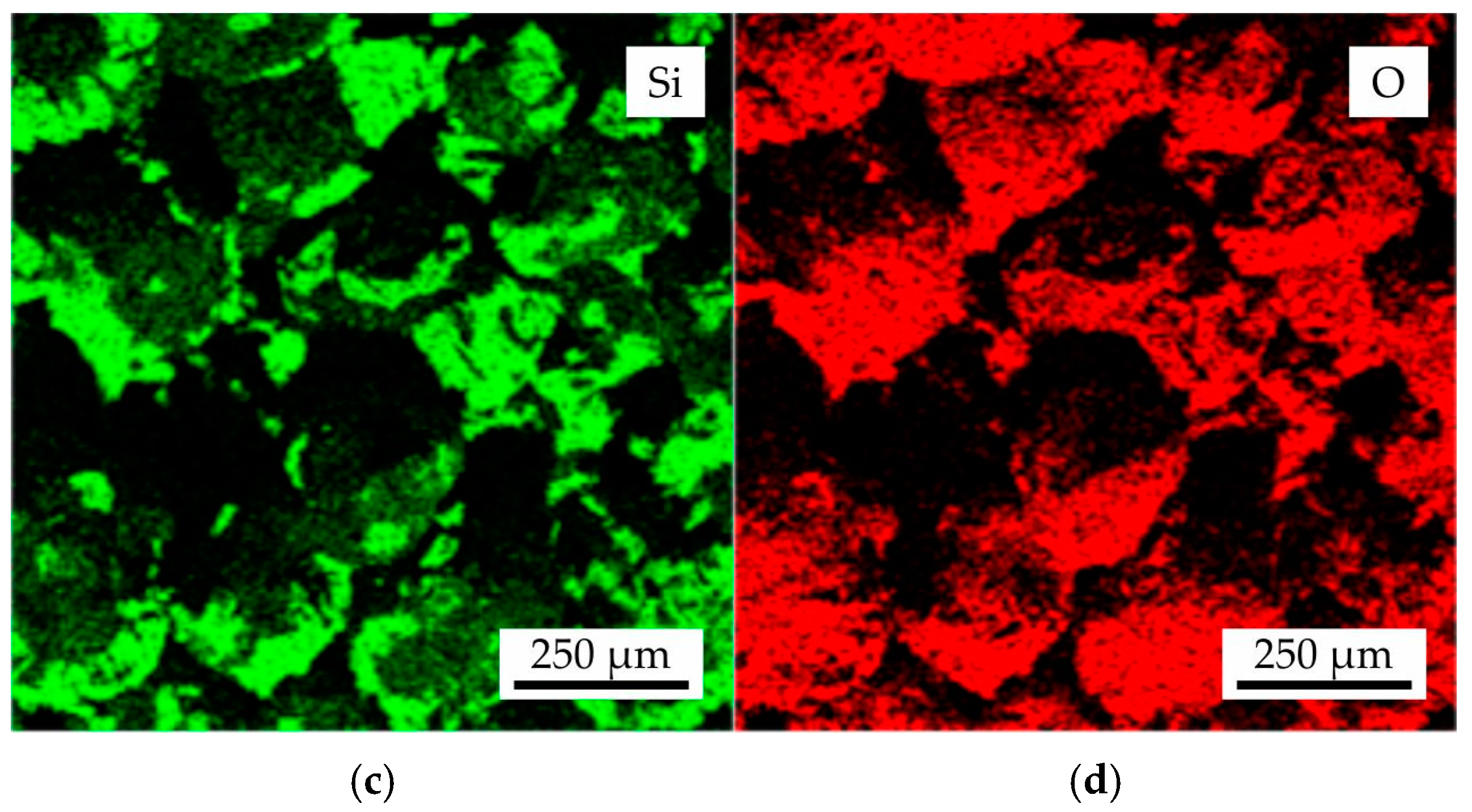
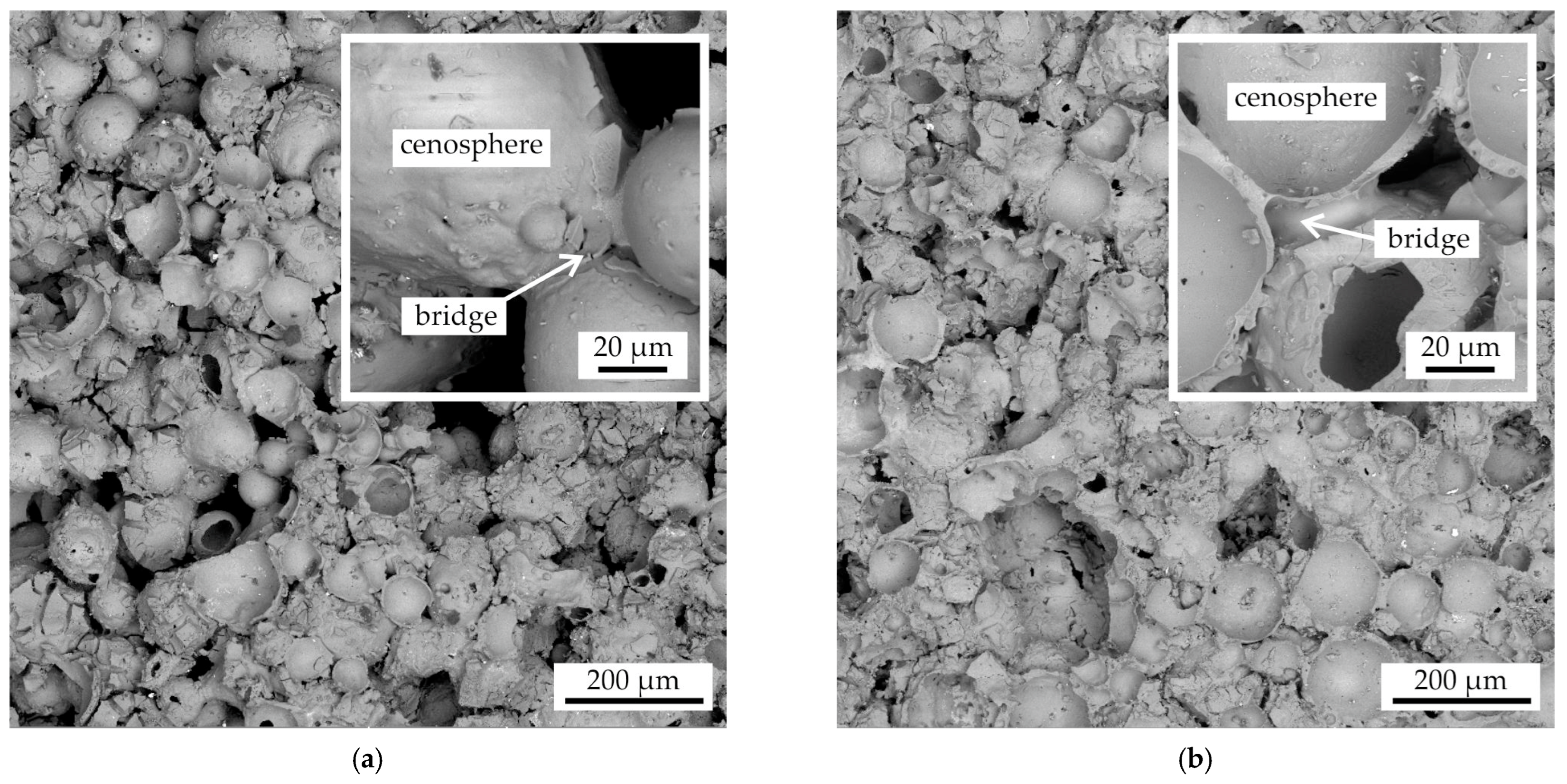


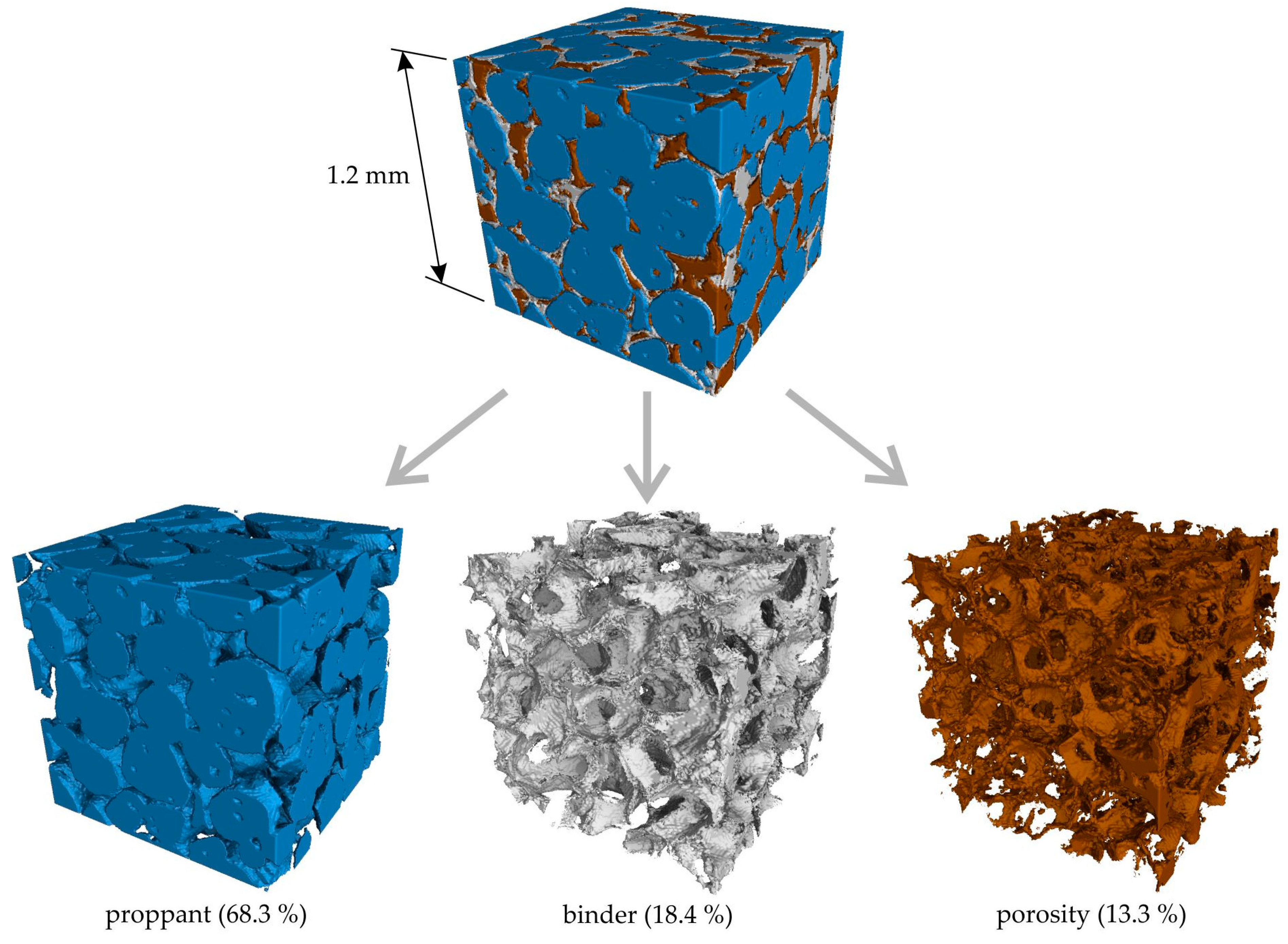
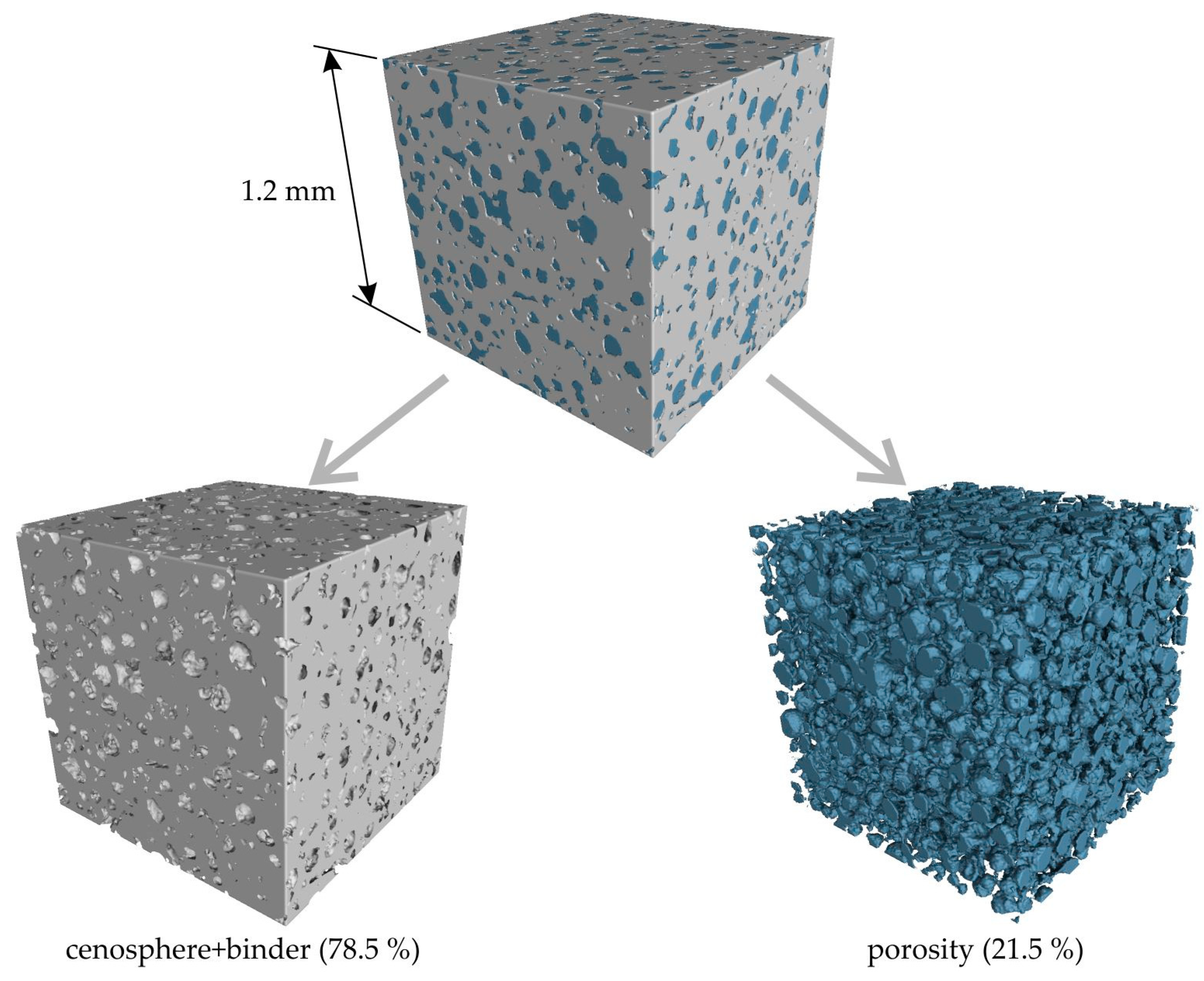
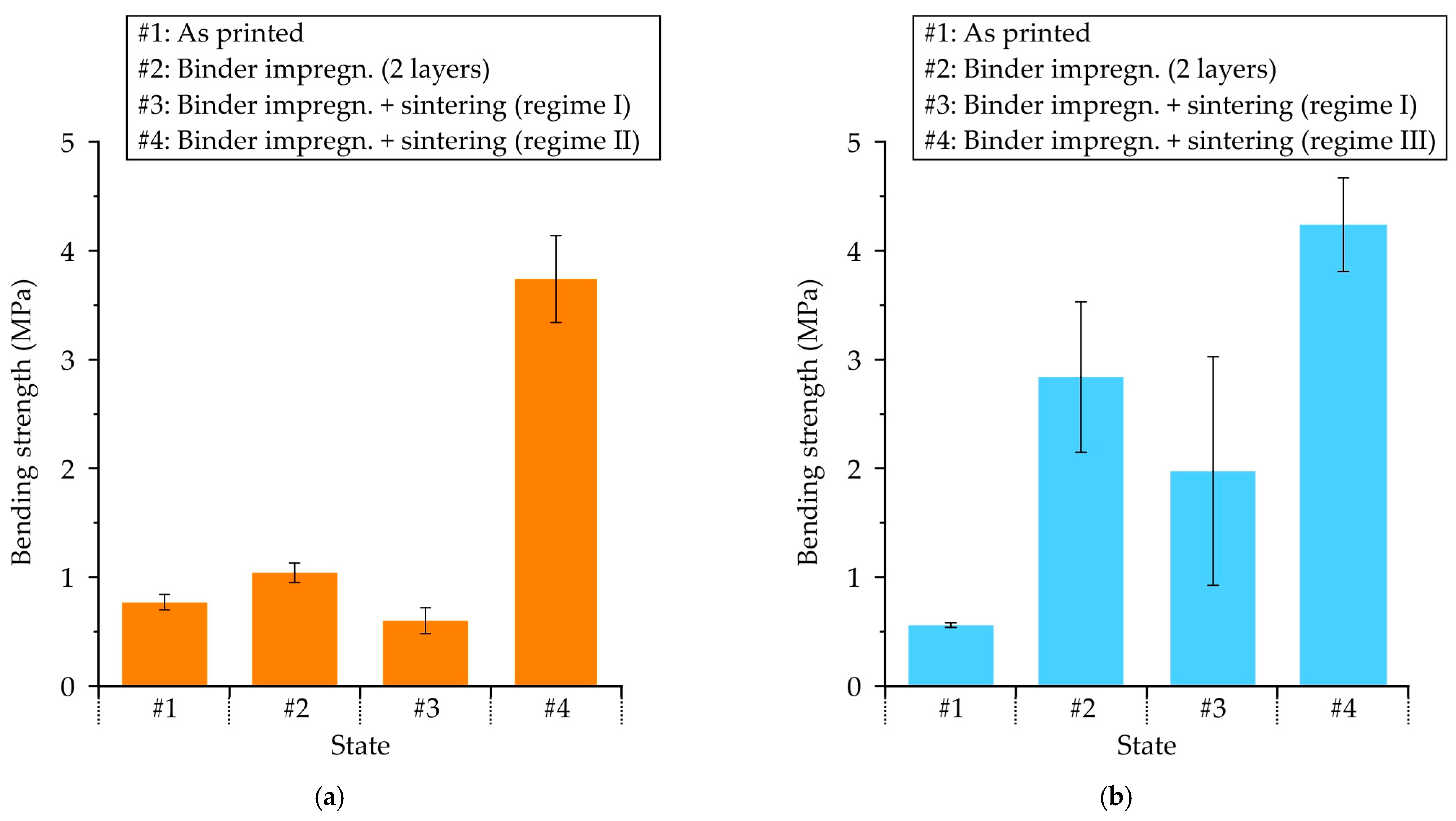
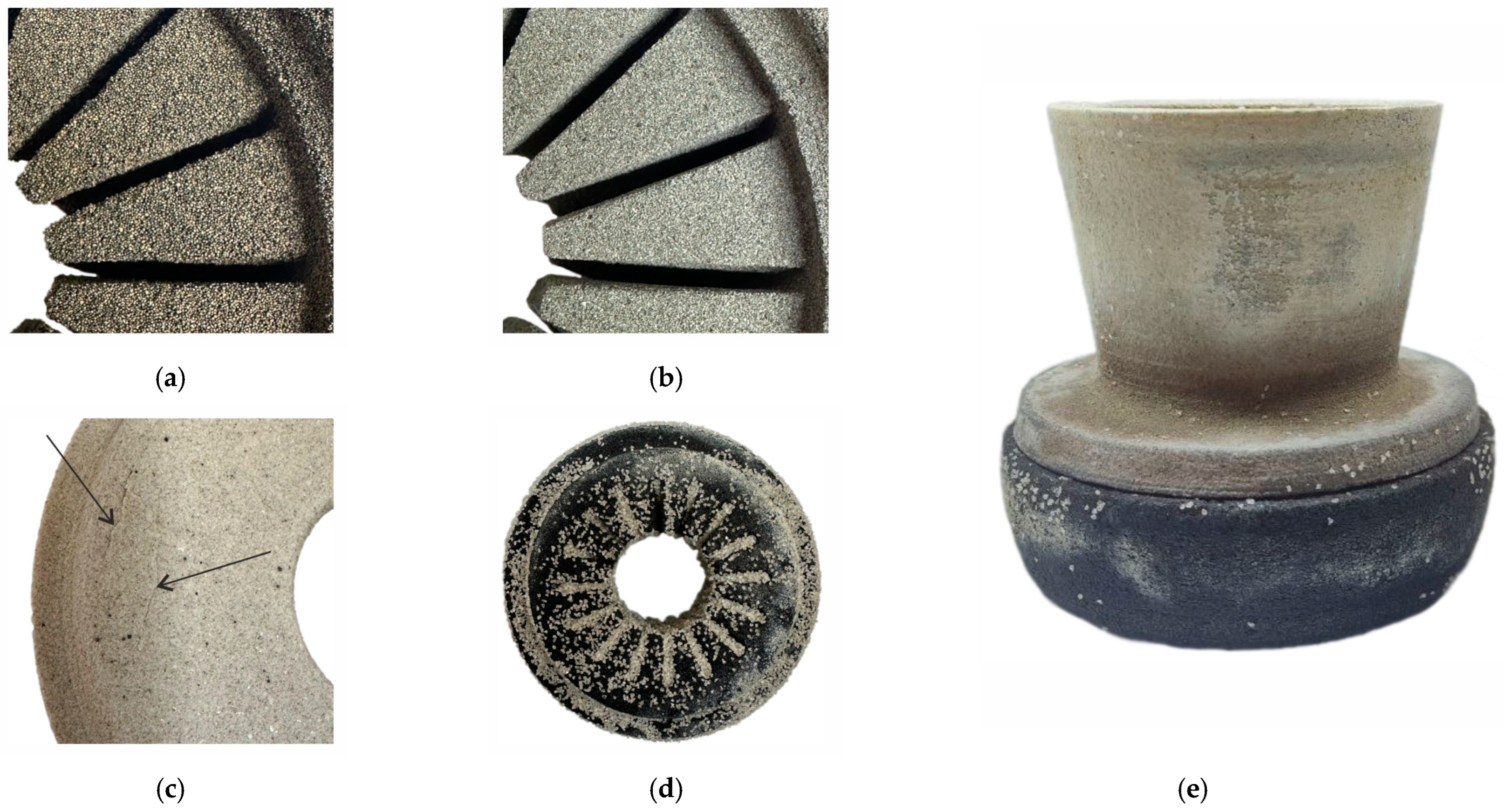
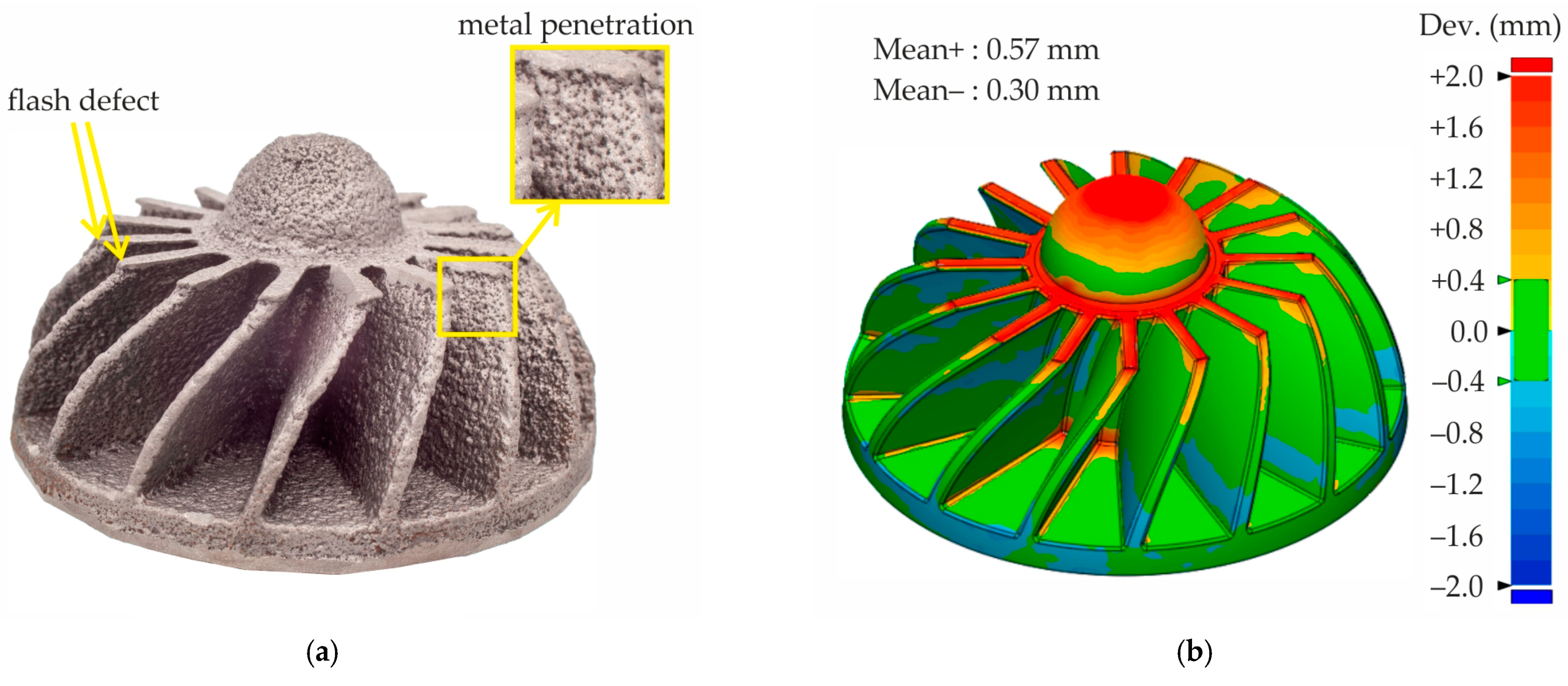

| Sand | Element Content (at.%) | ||||||||
|---|---|---|---|---|---|---|---|---|---|
| O | Al | Si | Ca | Ti | Fe | Mg | Na | K | |
| Proppant | Bal. | 26.7 | 3.5 | 0.5 | 0.7 | 1.5 | - | - | - |
| Cenosphere | Bal. | 12.4 | 17.5 | 0.2 | 0.1 | 0.2 | 0.1 | 0.3 | 0.2 |
Disclaimer/Publisher’s Note: The statements, opinions and data contained in all publications are solely those of the individual author(s) and contributor(s) and not of MDPI and/or the editor(s). MDPI and/or the editor(s) disclaim responsibility for any injury to people or property resulting from any ideas, methods, instructions or products referred to in the content. |
© 2025 by the authors. Licensee MDPI, Basel, Switzerland. This article is an open access article distributed under the terms and conditions of the Creative Commons Attribution (CC BY) license (https://creativecommons.org/licenses/by/4.0/).
Share and Cite
Bazhenov, V.E.; Deputatova, K.A.; Rizhsky, A.A.; Tselovalnik, Y.V.; Bazlov, A.I.; Chernyshikhin, S.V.; Koltygin, A.V.; Anishchenko, A.S.; Belov, V.D.; Shchedrin, E.Y. The Method for Fabricating Proppant and Cenosphere Sand-Based Casting Molds Involving the Use of Binder Jetting 3D Printing with Furan Binder and Impregnation with Colloidal Silica Binder. J. Manuf. Mater. Process. 2025, 9, 96. https://doi.org/10.3390/jmmp9030096
Bazhenov VE, Deputatova KA, Rizhsky AA, Tselovalnik YV, Bazlov AI, Chernyshikhin SV, Koltygin AV, Anishchenko AS, Belov VD, Shchedrin EY. The Method for Fabricating Proppant and Cenosphere Sand-Based Casting Molds Involving the Use of Binder Jetting 3D Printing with Furan Binder and Impregnation with Colloidal Silica Binder. Journal of Manufacturing and Materials Processing. 2025; 9(3):96. https://doi.org/10.3390/jmmp9030096
Chicago/Turabian StyleBazhenov, Viacheslav E., Ksenia A. Deputatova, Andrey A. Rizhsky, Yuri V. Tselovalnik, Andrey I. Bazlov, Stanislav V. Chernyshikhin, Andrey V. Koltygin, Alexey S. Anishchenko, Vladimir D. Belov, and Evgenii Yu. Shchedrin. 2025. "The Method for Fabricating Proppant and Cenosphere Sand-Based Casting Molds Involving the Use of Binder Jetting 3D Printing with Furan Binder and Impregnation with Colloidal Silica Binder" Journal of Manufacturing and Materials Processing 9, no. 3: 96. https://doi.org/10.3390/jmmp9030096
APA StyleBazhenov, V. E., Deputatova, K. A., Rizhsky, A. A., Tselovalnik, Y. V., Bazlov, A. I., Chernyshikhin, S. V., Koltygin, A. V., Anishchenko, A. S., Belov, V. D., & Shchedrin, E. Y. (2025). The Method for Fabricating Proppant and Cenosphere Sand-Based Casting Molds Involving the Use of Binder Jetting 3D Printing with Furan Binder and Impregnation with Colloidal Silica Binder. Journal of Manufacturing and Materials Processing, 9(3), 96. https://doi.org/10.3390/jmmp9030096







